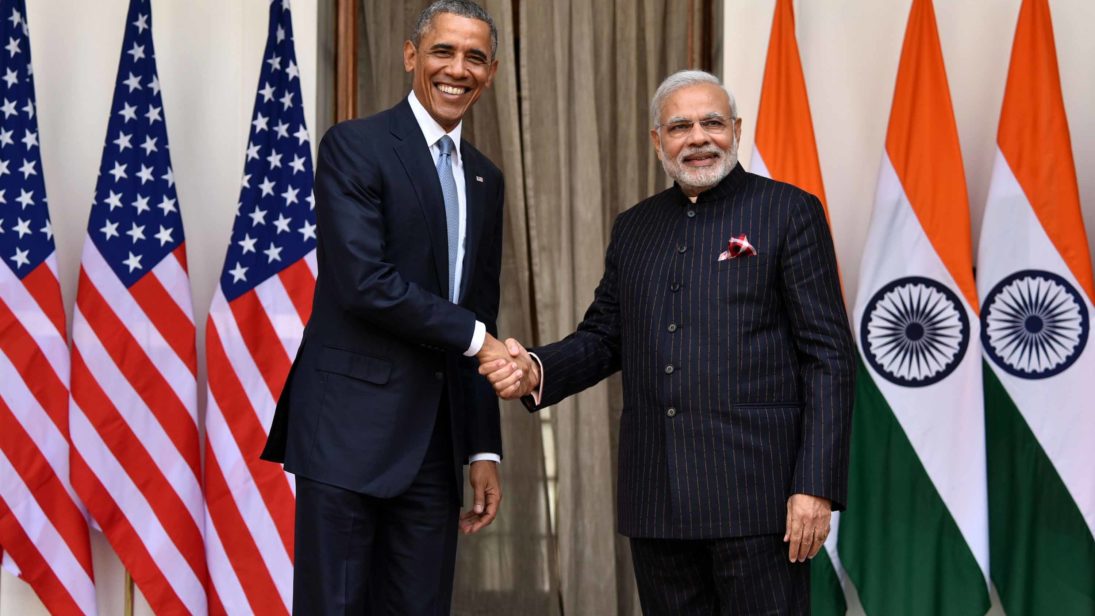
For quite some-time now I have been arguing that there are more divergences in India-US ties than convergences. While the “Chinese Threat” may for the time being subsume some of these, the reality is Indian semantic sophistry can get only so far before it hits up against reality. Iraq has been the latest reality check, close on the heels of another – Ukraine. While the US and India may see more or less eye to eye on China, very clearly in the next 50 years or so we are never going to be on the same page on West Asia.
India for its part detests the Sunni monarchies and has traditionally had a soft corner for secular Arab republics, or for Shia Iran. With the Arab republics it was more ideology; with Iran it has been an abiding strategic convergence, at least since Iran-Pakistan relations starting going south in the 1990s. Equally important has been India’s internal political dynamic, which sees Shia Muslims as well off, law abiding citizens (who incidentally tend to vote for the BJP). On the other hand the slow Wahhabi-Salafi hijacking of Indian Sufism (one of the most economically depressed sections) is perceived as deep threat to the Indian state. Perhaps surprisingly then for a western audience – Pakistan is seen as the symptom and Saudi Arabia the disease.
Instructive are the two completely different narratives that are playing out. Both of course are oblivious to the other – one focussing exclusively on supply side jihad and the other on demand side jihad.
In the US, Democrat and Republican alike blame Prime Minister Nouri Al Maliki’s sectarian Shia government that seems to have gone out of its way to antagonise the Sunnis. Evidently this and this alone is the major factor. The issue is it addresses the demand for Sunni jihad, but not the question of supply.
The Indian discourse tends to focus on the supply side of jihad. Quite correctly they point out that it is with US acquiescence that Qatar, Turkey, the Saudis and the UAE have been aiding ISIS. The serious power vacuum that has now existed in Syria for the better part of two years combined with toxic Wahhabism have produced much the same situation as existed in Afghanistan during the Taliban takeover.
Yet one would expect intelligent people to see both sides – but no. This perceptional divide seems to be societal as well. My tweets sharing information on Iranian involvement in Iraq have been retweeted by those who want to see this exclusively from the demand side. Conveniently they have chosen to ignore another tweet of mine showing Turkish Prime Minister Erdogan’s 2nd son, hobnobbing with some leaders of ISIS. On the other hand most of my Indian friends instinctively picked up the latter, ignoring the former.
Sometimes it becomes difficult even for someone like me to contain mounting anger at the US’ selective amnesia. Have the lessons of the Taliban and 9/11 been forgotten so quickly? There must be some truth then in what a Pakistani acquaintance told me in 2001 – before 9/11, when following a coup Pakistan was persona non-grata. His words can be paraphrased as follows “Abhijit – this American anger at our duplicity will evaporate once they leave Afghanistan, they will lick their wounds and once we realign our jihadis to suit their interests they will ignore what we chose to do with them.” At that time I dismissed him as a delusional barmy old codger, but sadly it would seem he was the realist and I the deluded Nehruvian. Clearly why should the ISI take American protestations seriously, when America tacitly condones Pakistani actions not too far away?
Here then is the situation. India sees China as a potential adversary – not a full-fledged threat. America along with several others has been goading India to join some kind of a recessed quasi alliance to “congage” China. Largely this has been done by tickling India’s vainglorious delusion of great-powerhood. However every American action either by commission or omission has created a ground situation where India will probably be forced to do the opposite. America is slowly pushing Russia and China closer. A few more kicks like sanctions over Crimea, and at some point Russian loathing of America will outweigh its fear of China. That would be nightmare number 1 for India – no more Russian veto on demand and a power balance hopelessly skewed against us and in favour of China. Add to this a dangerously revisionist Pakistan, backed by an arc of radical Salafism and you have India’s own ring of fire encircling it.
The question is how can any two countries with such vastly different perceptions of their national interest, and on a collision course over Russia and the Middle East, ever really become strategic partners?
***